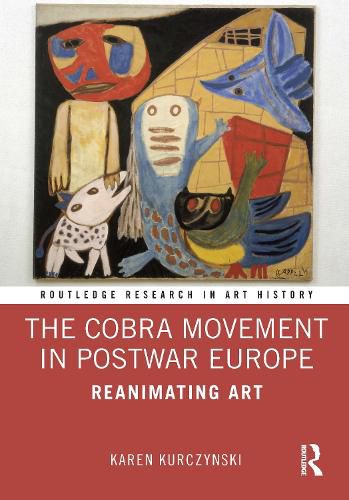Readings Newsletter
Become a Readings Member to make your shopping experience even easier.
Sign in or sign up for free!
You’re not far away from qualifying for FREE standard shipping within Australia
You’ve qualified for FREE standard shipping within Australia
The cart is loading…






This book examines the art of Cobra, a network of poets and artists from Copenhagen, Brussels, and Amsterdam (1948-1951). Although the name stood for the organizers’ home cities, the Cobra artists hailed from countries in Europe, Africa, and the United States.
This book investigates how a group of struggling young artists attempted to reinvent the international avant-garde after the devastation of the Second World War, to create artistic experiments capable of facing the challenges of postwar society. It explores how Cobra’s experimental, often collective art works and publications relate to broader debates in Europe about the use of images to commemorate violent events, the possibility of free expression in an art world constrained by Cold War politics, the breakdown of primitivism in an era of colonial independence movements, and the importance of spontaneity in a society increasingly dominated by the mass media.
This book will be of interest to scholars in art history, 20th-century modern art, avant-garde arts, and European history.
$9.00 standard shipping within Australia
FREE standard shipping within Australia for orders over $100.00
Express & International shipping calculated at checkout
This book examines the art of Cobra, a network of poets and artists from Copenhagen, Brussels, and Amsterdam (1948-1951). Although the name stood for the organizers’ home cities, the Cobra artists hailed from countries in Europe, Africa, and the United States.
This book investigates how a group of struggling young artists attempted to reinvent the international avant-garde after the devastation of the Second World War, to create artistic experiments capable of facing the challenges of postwar society. It explores how Cobra’s experimental, often collective art works and publications relate to broader debates in Europe about the use of images to commemorate violent events, the possibility of free expression in an art world constrained by Cold War politics, the breakdown of primitivism in an era of colonial independence movements, and the importance of spontaneity in a society increasingly dominated by the mass media.
This book will be of interest to scholars in art history, 20th-century modern art, avant-garde arts, and European history.